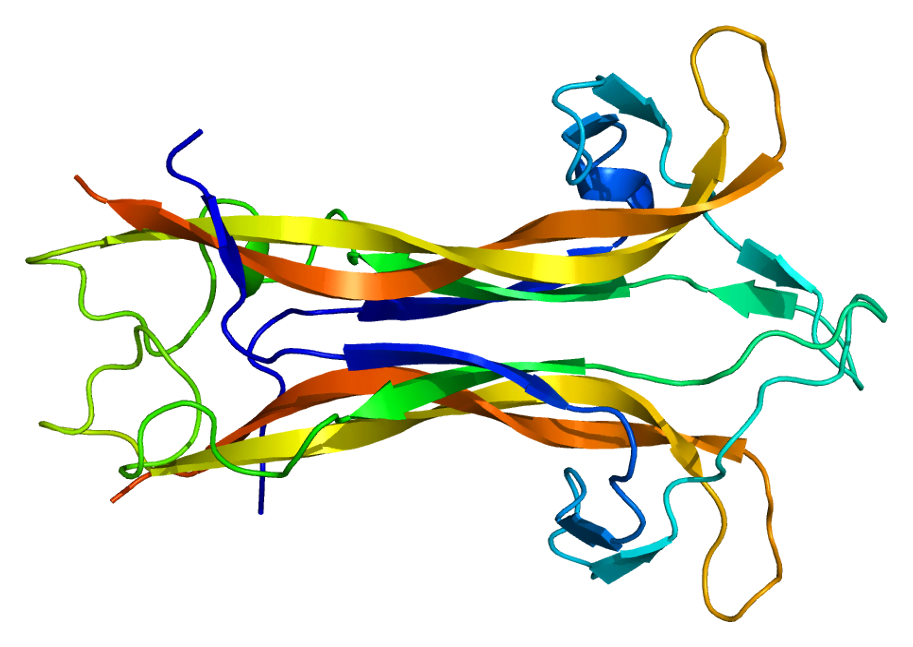
Share this post!
Love it, hate it, or love to hate it, exercise is an important aspect of health. Besides its benefits for the cardiovascular system, bones, energy metabolism, and the immune system, exercise affects the nervous system and cognitive function. In this article, we’ll learn more about brain-derived neurotrophic factor (BDNF), including what it is, how it affects neurons in muscle and the brain, and how to increase its production.
What is Brain-Derived Neurotrophic Factor?
First, let’s break down this big word so we can better understand what it is and why we need it.
- “Brain-derived” simply means that it comes from the brain. About 70-80% of circulating BDNF comes from the brain, the main component of the central nervous system.
- “Neuro” pertains to the nervous tissue, such as neurons and nerve cells.
- “Trophic” means something that stimulates other cells. Therefore, a neurotrophic factor is something that stimulates the activity of nervous tissue.

BDNF is a protein that belongs to a category of compounds called neurotrophins, whose function is to assist neurons to grow, survive, and differentiate. Neurotrophins affect the formation of new synapses, which are the gaps between nerve cells, and maintain existing ones. In addition to its neuroprotective qualities, BDNF improves metabolic function by decreasing appetite, heart rate, and blood pressure, and increasing aerobic capacity and insulin sensitivity. Some of these metabolic effects initiate from an unlikely endocrine organ: skeletal muscle.
BDNF is also a Myokine
Muscle contractions stimulate the release of myokines, which are protein hormones that act as chemical messengers to exert effects on its own cells (autocrine effect), nearby cells (paracrine effect), or system-wide cells (endocrine effect). These muscular secretions are potent regulators of glucose and lipid metabolism (i.e. the reactions in the body that use food, like carbohydrates and fat, to generate energy), bone formation, cognition, and more.
It’s not likely that BDNF produced by muscle fibers has endocrine effects, meaning it doesn’t enter circulation to affect other tissues, like the brain. However, the muscle terminals of motor neurons require protection too. Muscle-derived BDNF helps to maintain the neuromuscular synapses, which are the junctions between motor neurons and muscle fibers, in order to maintain muscle mass and strength.
BDNF and Age-related Muscle Loss
There are two types of muscle fibers in skeletal muscle: Type I and Type II. Type I muscle fibers are small, slow-contracting, and generate a small amount of power, though they have good endurance. In contrast, type II muscle fibers are larger and faster, producing more tension upon contraction, which makes them more powerful than type I fibers, but they fatigue more quickly.
As we age, muscle mass and strength decrease – a condition known as sarcopenia. In sarcopenia, type II muscle fibers disappear disproportionately faster than type I muscle fibers, leading to the overall loss of muscle strength in the elderly and chronically ill. Furthermore, type II muscle fibers are also known as “glycolytic” muscle fibers, as they rely on glycolysis for energy (i.e. uses glucose), which may contribute to metabolic benefits such as glucose utilization and insulin sensitivity.
A study performed on mice showed that BDNF derived from muscle may promote the growth and maintenance of type II muscle fibers. In the study, researchers altered gene expression in mouse muscles to decrease or increase BDNF production. Their results showed that lack of BDNF shifts the proportion of muscle fibers towards type I muscle fibers and increased BDNF promoted the growth and maintenance of type II muscle fibers. These results suggest that BDNF may play a role in preventing age-related muscle loss.
Though muscle-derived BDNF doesn’t enter circulation to affect the brain directly, other myokines may do just that. Next, we’ll take a look at how BDNF levels are increased in the brain during exercise.

Exercise Enhances Cognitive Function
Numerous studies have shown that exercise increases brain function, particularly in the hippocampus, which is devoted to spatial learning and memory. It is clear that BDNF production increases during exercise, in part from contributions of myokines with endocrine effects, such as cathepsin B, irisin, and insulin-like growth factor-1 (IGF-1). Muscle contractions stimulate their production and release from muscle tissue, then they enter circulation, cross the blood brain barrier, and activate BDNF production.
A study in Experimental Physiology measured the contributions of BDNF produced in the brain during exercise in human and mouse models. Researchers measured BDNF in human exercisers from the internal jugular vein, which collects blood from the brain and delivers it to the heart, versus the radial artery in the forearm. Results concluded that circulating BDNF levels contributed by the brain increased by 2-3 times during exercise. The study went a step further and analyzed the brains of mice after exercise and found that BDNF mRNA (i.e. gene expression) was also increased during the recovery period, perhaps to compensate for increased demand for BDNF as a result of strenuous activity.
Evidence for the increased production and circulation of BDNF as a result of exercise suggests that BDNF production is an important stress response and survival mechanism. Under perceived stress, such as oxygen deficit and exertion itself, the brain produces more of a factor that protects and encourages growth of new neurons and connections, known as neuroplasticity. This mechanism surely helped our ancestors in part by increasing the volume of the hippocampus, which allowed for better navigation and memory during long treks across landscapes in search of food.
Exercise, of course, is a great way to boost the production of BDNF. But which forms of exercise have the greatest benefit? Are there other ways to increase BDNF?
How to Increase BDNF
Certain types of exercise may promote a greater increase in BDNF production, particularly exercise coordinated with mental focus and high-intensity exercise.
Exercise that involves complex motor learning versus repetitive movements induces greater production of BDNF, likely due to more involvement of brain components like the hippocampus, cortex, and cerebellum. For instance, dance training was shown to be more beneficial than standard repetitive exercise in an experiment on the elderly, indicating that physical exertion paired with intense focus and attention may have greater effect on neural plasticity. Yoga is another activity that combines mental focus with physical activity, a winning combination for the production of BDNF.

In addition, the more strenuous the exercise is, the more BDNF is generated. 45 male participants were engaged in varying levels of activity in this study to examine the effects of varying forms of exercise or sedentary behavior on BDNF levels. The authors concluded that BDNF levels were most likely to increase following the most vigorous and longest duration of physical activity.
Of course, it is always important to assess your own personal health status along with your doctor to determine the degree of strenuous activity that is right for you. Provided you are adequately healthy for vigorous physical activity, it may be beneficial to up the intensity of your workouts to reap the benefits of increased BDNF.
Other factors that increase the production of BDNF include:
- A lower-carbohydrate diet, especially when paired with an exercise routine
- Intermittent Fasting
- Quality sleep
- Meditation
- Sunlight exposure
- Social connection
Other nutrients and botanicals that may increase BDNF production include probiotics, green tea, omega-3 fatty acids, and plant-based compounds, such as resveratrol found in grapes and DHF (7,8-dihydroxyflavone), a bioflavonoid that mimics BDNF that is found in cherries and soybeans.
An Interesting Note about Platelets
Platelets are small cell fragments that circulate along with white and red blood cells whose function is to stop or prevent bleeding upon injury. Interestingly, BDNF is stored within platelets and is released during clotting events. This makes sense because if you sustain an injury and are bleeding, the body would want to heal and protect the neurons nearby.
Chronic inflammation, for example, would increase demand for BDNF and thus reduce circulating levels of this neurotrophin. Indeed, low BDNF levels are observed in many conditions involving chronic inflammation, including Parkinson’s disease, Alzheimer’s disease, cardiovascular disease, metabolic syndrome, and mood disorders, such as anxiety or depression. Conversely, exercise adapts us to inflammation by upregulating the production of BDNF to counteract exertion-induced tissue damage and protect the nervous system.
BDNF is a Gift
Celebrity trainer Kira Stokes (and my own personal trainer thanks to her super-affordable, high-quality content app) always says, “Be grateful for the ability to move and challenge your body because it is truly a gift.” Part of that gift is the production of BDNF, which rewards our exertion by nourishing and protecting our bodies from age-related disorders and cognitive impairment. The myriad benefits of exercise, including BDNF, is certainly worth the effort.
About the author: Karyn Lane is a current student of NTI’s Nutrition Therapist Master Program. She finds her chemistry degree a useful tool in her study of nutrition and loves to treat herself as a laboratory for new recipes and cooking techniques. You can follow her on Instagram @feel.alive.nourishment
Images:
Image by Victor Freitas is free for use by Unsplash
Image by Emw is licensed under CC BY-SA 3.0
Image by TheDigitalArtist is free for use by Pixabay
Image by Alora Griffiths is free for use by Unsplash
Share this post!




















